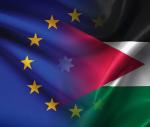You are here
Rationalising protest action
May 20,2019 - Last updated at May 20,2019
Back in February 2011, nearly three-quarters of adult Jordanians and 80 per cent of the elites’ sample supported protests that were taking place in the Arab world demanding political and economic reforms. At the same time, support for the protests in Jordan was around 47 per cent among the public, and 63 per cent among the elites’ sample. Reported participation rates were 7 per cent among the public, and 21 per cent among the elites’ sample. Obviously, the social desirability effect was evident, as people were associating with a very positive atmosphere in early to mid-February 2011, when this poll was carried out by the Centre for Strategic Studies (CSS).
Support percentages, as well as reported participation rates in protest activities, dropped significantly after the Arab Spring turned bloody in Tunisia, Syria, Libya and Yemen. Lower levels of support for, and participation in, protests throughout 2011 and 2012 were also a function of state responsiveness. The state started a process of national dialogue, engaging relevant political forces, whether organised, such as Islamic Action Front Party, or loosely organised Hirak activists. This process led to constitutional and structural changes that moved the country forward in a peaceful manner.
Since 2011 and until now, many factors have changed locally and regionally. Internal weak economic performance, coupled with regional realignments and global competition in and over the region, produced a complex web of intersections that Jordan must deal with proactively. One of these complex issues is managing state-society relations under economic stress and government inapt polices. While the government is not producing satisfactory results for the public — the lowest performing ministerial team since 1996, according to CSS and NAMA polls — the public is becoming increasingly edgy. Recent polls show that support for protest action has grown from around 15 per cent in 2012 to 63 per cent in April 2019.
The question is whether this change of attitudes is going to mean more protest action in the streets. Judging by previous attitudinal and behavioural data trends, it is unlikely to see mass protests across the country, despite the growth of dissatisfaction with government performance. However, the current pockets of protesters will remain active, and it does not necessarily mean significant sustainable growth for a few rational reasons:
First, there are 1.3 million subscribers to the Social Security Fund. This affects the lives of 6 million Jordanians who have direct interest in preserving the “certainty they know” over the “uncertainty they do not know” despite the fact that a majority of them are not satisfied with government performance.
Second, Jordanians trust the military and security institutions. This trust extends to a deeply-held belief that these institutions will keep the interests of Jordanians at heart despite sluggish civil institutions performance.
Third, the perceived and actual costs of protest action are relatively high compared with the benefits that participants may expect as a result of their action. In addition to monetary cost, there are social and political costs associated with the participation in and promotion of unconventional political action that discourage people.
Fourth, preserving stability is very important to the overwhelming majority of Jordanians. Even peaceful protest discourages people from coming to Jordan and those in the country from going around the Kingdom; it exerts pressure on tourism, transportation and incoming patients and students. Tourists’ numbers show how inconsequential protests have been.
The writer is chairman of NAMA Strategic Intelligence Solutions. [email protected]















